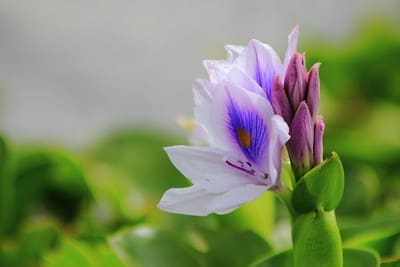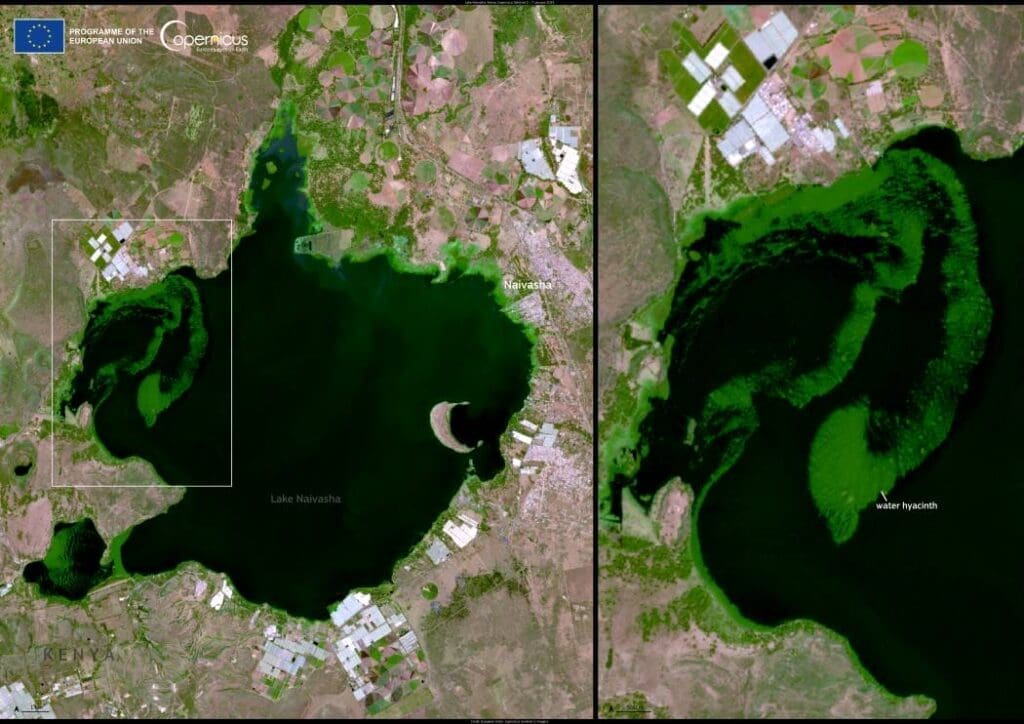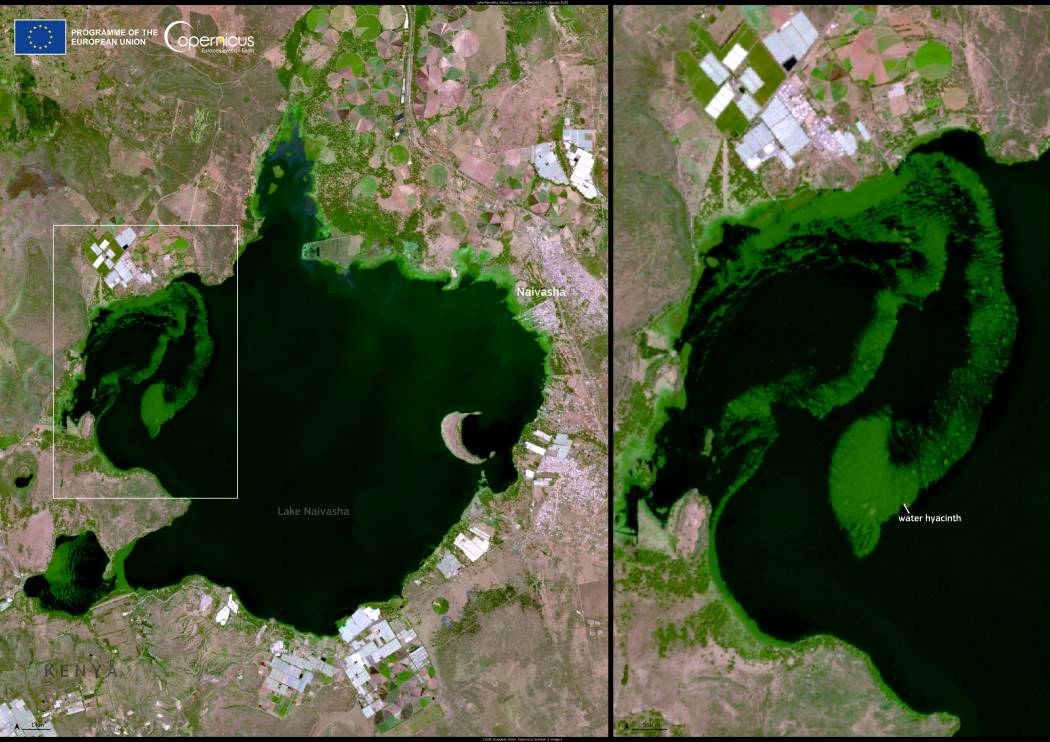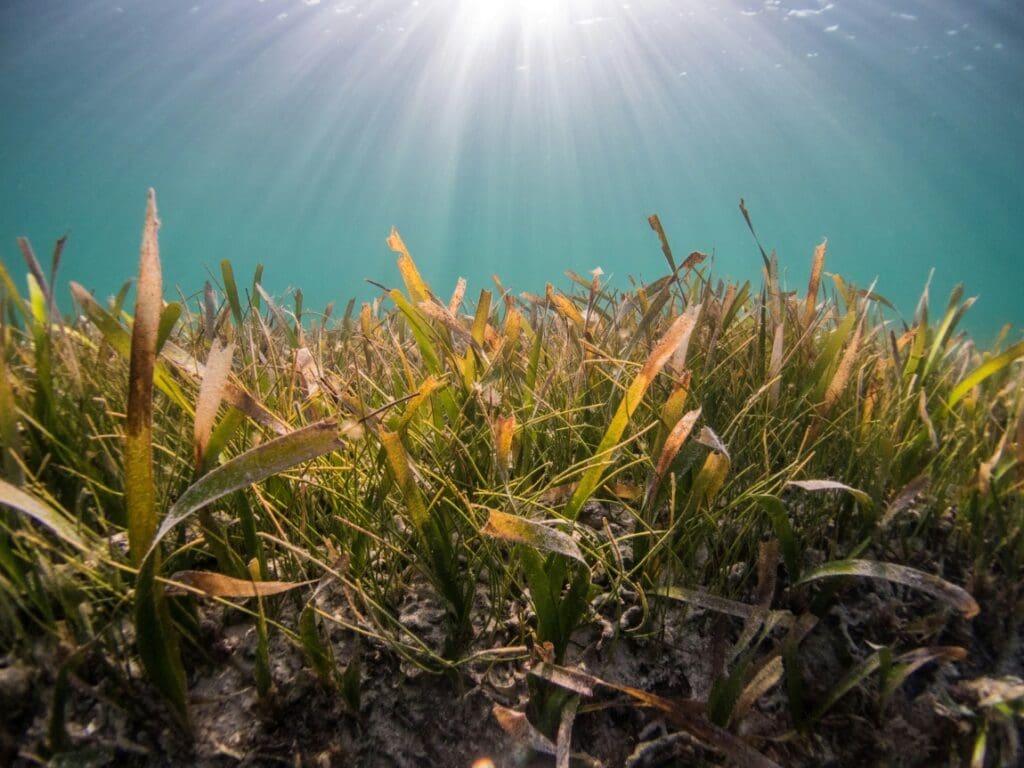The Copernicus Sentinel-2 satellite captured a striking image of Lake Naivasha, Kenya, on January 7, 2025, revealing an unsettling phenomenon: vast mats of water hyacinth choking the lake’s surface.

This invasive plant, introduced in the late 1980s, has severely disrupted the lake’s ecosystem and the livelihoods of surrounding communities.
Water hyacinth thrives in nutrient-rich waters, forming dense blankets that obstruct sunlight, reduce oxygen levels, and create inhospitable conditions for aquatic life. The plant’s rapid spread has diminished fish populations and rendered sections of the lake unnavigable, impacting the fishing industry, a critical source of income for local residents.
Fishermen like Simon Macharia have firsthand experience with the plant’s toll. “Sometimes it becomes very serious,” he explained, recounting an incident where colleagues were stranded on the lake for three days due to the plant’s density, requiring helicopter rescue. The mats not only obstruct fishing but also lead to equipment losses and reduced catches, exacerbating financial strain on already vulnerable communities.
The economic ramifications extend beyond fishing. The water hyacinth threatens the flower farms surrounding Lake Naivasha, a vital sector for Kenya’s economy. The infestation also poses broader challenges, such as clogging irrigation systems and hydroelectric facilities, underscoring the global economic impact of invasive species.

The issue of water hyacinths extends far beyond Kenya. Native to South America, the plant has colonized freshwater ecosystems worldwide, with Africa bearing a particularly heavy burden. According to a 2024 IPBES report, factors such as land use changes and climate change have fueled the plant’s exponential expansion. The cost of managing water hyacinth infestations now exceeds $700 million annually on a global scale.
Satellite monitoring plays a key role in addressing the crisis. Images like the one captured by Copernicus Sentinel-2 provide vital data for environmental management, equipping policymakers with tools to tackle invasive species and support affected communities. As the situation in Lake Naivasha demonstrates, the fight against water hyacinth is not only about conserving biodiversity but also about protecting livelihoods and sustaining economies.
Featured image credit: European Union, Copernicus Sentinel-2 imagery




